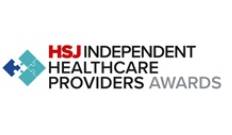If the NHS is to fully realise the promise of genomic healthcare it will need integrated systems which efficiently share information with clinicians, writes Steve Abbs
![]()
This is paid-for content from our commercial partners. Find out more
Genomics is high on the agenda for NHS England and for developed healthcare systems throughout the world. To some extent, that has been driven by increased technological capabilities. It is now fairly straightforward to sequence someone’s genome – meaning their entire genetic makeup. We can sequence hundreds of patients simultaneously and have results back within a few days.
It is also significantly cheaper than it once was. To sequence a genome now costs under £1,000, excluding labour and infrastructure. This reduced cost and increased technological capacity means widespread use of genomic sequencing becomes a more viable proposition.
Sponsored by
There are many possible advantages to greater use of such sequencing. Many disorders have a genetic component, and being able to diagnose these conditions more rapidly and accurately would be of huge benefit. At present, some patients have to go through a ‘diagnostic odyssey’: spending years enduring unexplained symptoms, experiencing a battery of sometimes invasive tests, only for clinicians to still be unable to confirm a diagnosis. In genomics lies the potential to avoid such situations.
There is also the possibility of tailoring an intervention to an individual’s specific genetic makeup. This concept of personalised medicine has taken a while to progress, but the number of diseases for which it is applicable is increasing as time goes on.
Having a system that can manage that data and give clinicians access to the clinically relevant results is an essential element that hospitals and primary care now need to consider
Good news too is that access to genomic tests is improving. The creation of NHS Genomic Laboratory Hubs across England, collectively delivering a comprehensive array of tests that are outlined in the National Genomic Test Directory, should help reduce the previous postcode lottery. This sort of standardisation is to be warmly welcomed. So too is the work of Health Education England to educate all healthcare professionals in genomics and ensure they are aware of the capabilities of genomics for their patients.
But clinicians will also need systems which allow them to efficiently find and order genomic tests and act on the resulting genomic information. Sequencing a genome generates a huge quantity of data. Having a system that can manage that data and give clinicians access to the clinically relevant results is an essential element that hospitals and primary care now need to consider. Otherwise there is a danger the genomic data simply goes into a black hole, never to be considered or acted upon.
Getting this right means having a good data flow from the laboratory that performs genomic tests and into electronic patient records. This means getting interoperability right, and that’s a key area of focus for CliniSys.
Our electronic ordering systems are designed to enable easy ordering of tests and our laboratory information systems integrate results seamlessly with electronic patient records. That includes GLIMS Genomics, which is our system specifically designed for genomics laboratories. It provides efficient workflows that meet the needs of laboratories but also helps get information to clinicians.
Genomics holds enormous promise. It can give us more information to make faster and better diagnoses and to offer better treatments. But if we are to realise that promise, getting information to the right clinician at the right time will be crucial – and where effective IT has a central role to play.




























